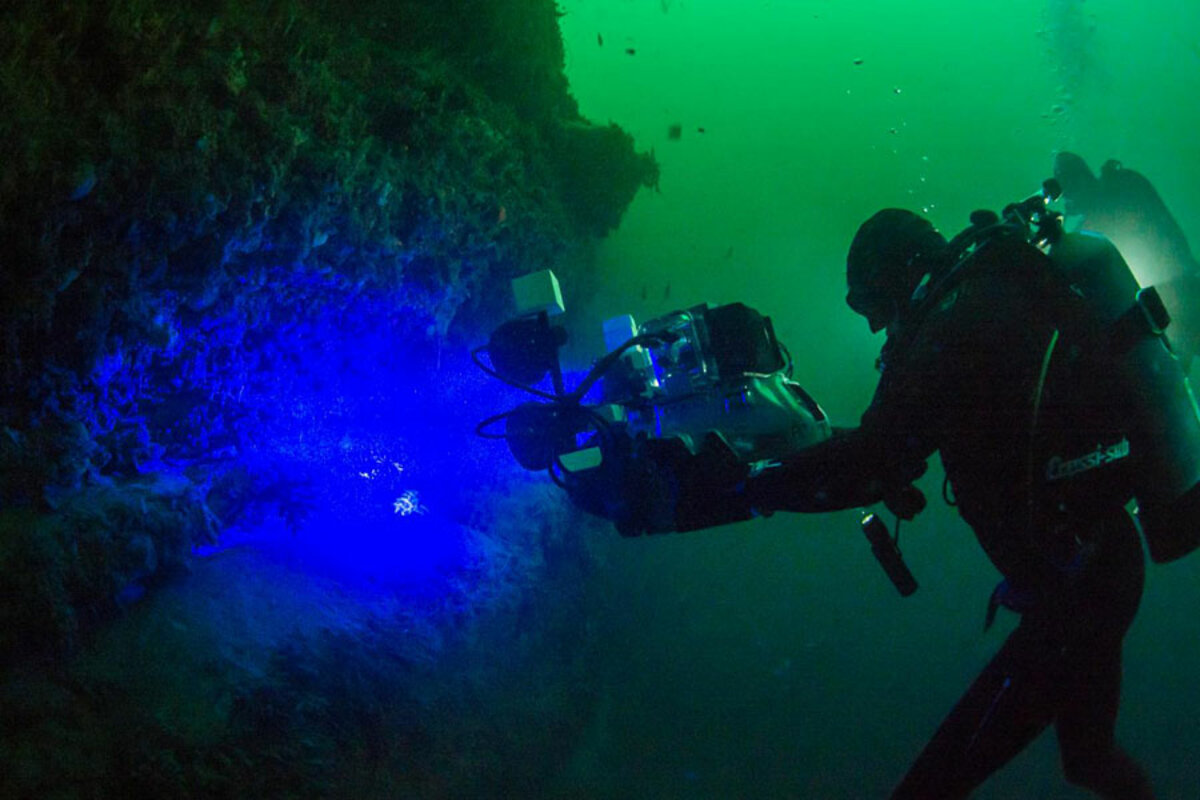These sharks glow brilliant green in the dark ocean depths
Loading...
To the human eye, swell sharks and chain catsharks appear dull, with light brown and darker patterns. But that might not be the case for members of their own species.
To each other, these sharks can glow a brilliant green, say scientists.
These two species of shark dwell in the dark blue depths of the ocean, so they use biofluorescence to stand out to each other, according to new research published Monday in the Nature journal Scientific Reports. And the deeper they go, the more clearly they can see the glowing patterns on their cohorts.
"Imagine being at a disco party with only blue lighting, so everything looks blue," study lead author David Gruber, a researcher at Baruch College, City University of New York, and the American Museum of Natural History, told National Geographic. "Suddenly, someone jumps onto the dance floor with an outfit covered in patterned fluorescent paint that converts blue light into green. They would stand out like a sore thumb. That's what these sharks are doing."
How does it work?
Biofluorescence is when an organism absorbs light at one wavelength and then re-emits it at another. In this case, the sharks' skin transforms blue light into green. This is not the same as bioluminescence, which is when an organism generates light itself through a chemical reaction.
The team of scientists decided to take a shark's-eye-view to investigate biofluorescence.
First, they looked into structure of the two species' eyes. It turns out that shark vision is rather monochromatic. While humans have three color pigments (red, green, and blue) in their eyes, these sharks have just one. But the sharks do have remarkably long rod pigments to see better in low-light.
These sharks live deep underwater. Most wavelengths of light are blocked out by the water over the sharks, but blue light makes it through. So it's no surprise that these animals can only see blue-green light.
To see for themselves what the sharks see, the scientists built a "shark-eye" camera. Using what they learned about the pigments in a shark's eye, they added filters to an underwater camera so only the wavelengths the animals could see would get through.
Then the team dove into Scripps Canyon, off the coast of San Diego, on the lookout for glowing sharks.
When they returned to the lab, the researchers used the images they captured to create a mathematical model. That model suggests that as the sharks swim deeper, the contrast of their glow increases.
For now, the scientists can only speculate how biofluorescence helps the sharks. Perhaps they are using it to identify or communicate with one another.
Christine Bedore, a researcher at Georgia Southern University, told the Atlantic that she's "pretty doubtful that the fluorescence has any ecological relevance."
But Dr. Gruber says sharks aren't the only marine animals to use biofluorescence. Over 200 species of shark and bony fish have been found to glow in this way.
"It makes perfect sense if you think about life in the blue ocean," Gruber told The Atlantic. "Why wouldn't they come up with a way to make their world richer in texture?"








